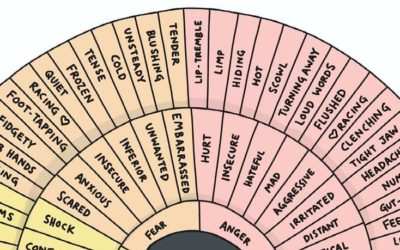Our Blog

What does it mean to be multi-passionate?
Growing up, you probably had a hard time answering the question “what do you want to become in the future?” as settling down to just one thing was impossible and frankly quite heart-breaking. How could you leave all your passions, interests, entire parts of yourself out?!
As an adult, you probably still find it difficult fitting in the conventional career box and the typical question at social gatherings “so, what do you do?” may not be much easier to answer as a grown-up as it was when you were a kid….
Multi-passionate individuals have various passions and keep discovering new interests. They spend their time learning, going through life collecting knowledge and experiences the same way a puzzle maker collects the pieces. But usually without knowing what the final picture will form eventually. They don’t have the puzzle box to look at and guide them.
As a renaissance person, multi-potentiality, polymath, scanner or as Liz Gilbert would say “hummingbird”, it can be challenging, overwhelming or even discouraging to find your path and a sense of belonging in a society that isn’t really designed for people like us.
If you’re stuck because you don’t know which of your many passions to choose from, if you don’t WANT to choose, if you you’re worried to look (or feel) scattered and flaky, if your resume is all over the place, here are some tips for you to be okay with being multi-passionate:
1- Embrace who and where you are
As with so many other things in life, acceptance is the first step. Don’t judge yourself by others’ blueprints. Most people have a pretty standard idea of what success and being an adult should look like (a stable career, homeownership, money in the bank, a partner and maybe kids). Don’t worry about what you “should” be doing. Don’t pressure yourself to conform and fit in. Instead, be kind and patient with yourself. Trust that it will make sense in the end and keep connecting the pieces of your puzzle. Devise a strategy that will help you through the journey.
2- Write down all your ideas
Personally, I have a few pages of my Bullet Journal dedicated to the things I want to learn, the TED videos I want to watch (and since we’re on the topic, have a look at Emilie Wapnick’s amazing Ted Talk for multi-potentialities), the books I want to read (again, “Refuse to choose” by Barbara Sher is highly recommended), the projects I want to realize, etc. so I can keep a record of all interests and ideas that come up and review them regularly. Keeping track of what I’ve tried and what I will try in the future helps me with Tip #3…
3- FOCUS!
When you’re passionate about so many things and every new idea is like an irresistible shiny object you must go after, focusing your energy toward any one project is difficult. So pause. Write down your new idea in your notebook and keep it for later. That way you don’t forget and miss out on a potential amazing project but you don’t get side-tracked by it either. Developing your focusing skills (through meditation, time-frame allocation, …) is the number 1 skill you need to cultivate as a multi-passionate to keep you sane, productive and ultimately make money.
4- Think big picture
When you review all the ideas in your notebook or when a big opportunity comes along, think big picture: what kind of life do you want to have? What does success mean for you? What are your values? And see how this new project or interest might fit into that. Is it aligned with your bigger vision? Is it going to get you closer to where you want to go / who you want to be(come) ?
If the answer is YES, go for it!
If you’re still unsure, first ask yourself why and then act on it. As Marie Forleo says “clarity comes from engagement, not thought”.
5- Don’t try to monetize everything you do
While having a career that encompasses most of your passions and/or having found a balance among interests and different streams of income (portfolio career) is absolutely amazing, not every new idea or hobbies are going to fit in. Do not try and cram everything into just one business. Do not try and make a living from everything you do. Let some of your passions be just that: passions you do purely for the joy of it. Let yourself have interests OUTSIDE of your business.
BONUS TIP: Get help!
If you want to find a way to tie it all together, to identify your transferable skills and how the overlapping areas of interest can work together, finding a career coach or counselor might yield you some really helpful insights and help you think of combining some of your strengths and passions into a career that is meaningful, fulfilling and financially feasible for you. The 12-session program “Path to Purpose: Unleash your Dharma” will help you get clear on your values, your unique super powers and what really makes you happy. It will give you the confidence and support you need to follow your purpose.
Start acting today! Contact me for your FREE 20 minutes discovery session!
Past articles
Interior Design Psychology
Its Influence on our Subconscious With most of our lives spent indoors, and even more so during the Covid-19 pandemic, the space we occupy has a major role in our psychological behavior. Environmental psychology - or interior design psychology - is about the...
Drishti · The Yogic Gaze
As human beings, we are predominantly visual creatures. We connect to the world around us mainly through the sense of sight. Over 50% of our brain is involved with processing visual stimuli. Where our eyes are directed, our attention follows and the visible world can...
How do you feel?
The vital importance of recognizing and naming your emotions Emotions are experienced throughout the body (nausea, blushing, sweaty palms, …) and the Lindsay Braman “Emotion-Sensation Wheel” is a great tool that supports the mind-body awareness and connection. The...
The Yamas and Niyamas
In the West, what we commonly mean by yoga actually refers to the asana practice (the physical postures in hatha, vinyasa, ashtanga vinyasa, yin yoga, etc.), when in fact, this practice only represents one of the eight limbs of the ashtanga path described in...






